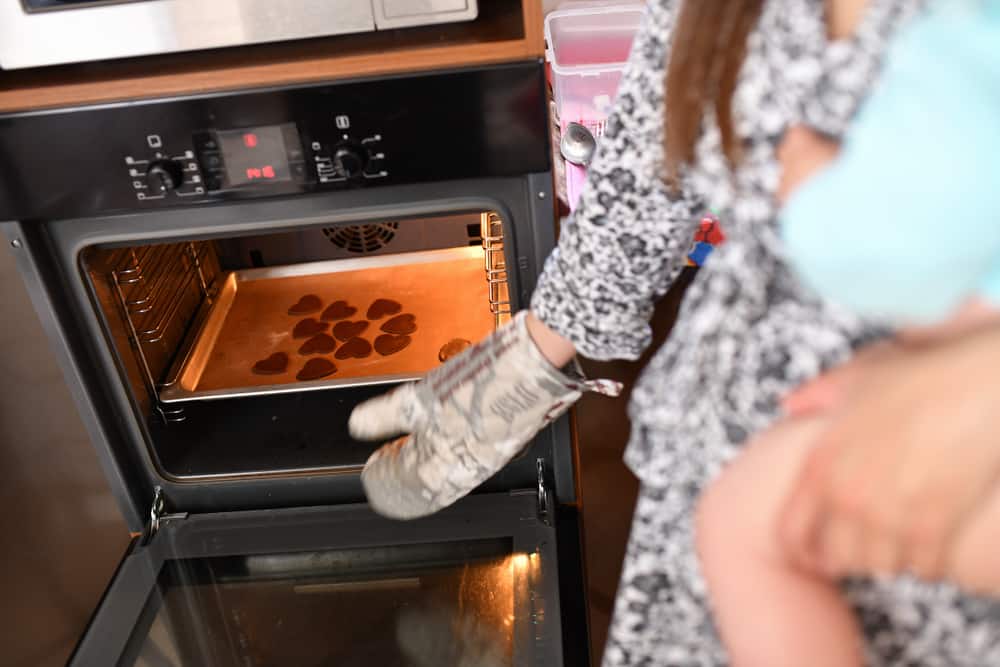
The warping issues with pans and baking sheets are mostly linked with the poor build quality and thinness of these containers. While many factors play a role in bending a pan in the oven, you can almost always trace back these issues to the quality of materials used.
So, if you’re repeatedly running into issues with pan bending in the oven, then it might be a good idea to refer to more reputable brands. Otherwise, you will keep running into warping issues with the pan in the oven.
Pan Bending in Oven
From the choice of material to the temperature variations, you need to consider a ton of factors to keep your pans in perfect shape. Let’s cover some of the reasons why your pan is bending in the oven.
- Use of Aluminum
The choice of materials is the first reason why you might be running into bending issues with the pan in the oven. While going with aluminum pans can be cheaper for users, this material is way softer than stainless steel and doesn’t bring the same durability to your cooking system. So, there is a good chance you’ll run into the same issue when using aluminum pans.
The best thing you can do to avoid this outcome is switch to stainless steel pans that are substantially more durable than aluminum options. The stainless-steel pans are more expensive, but you will save a lot of headaches in the long run.
- Thickness of Material
The thermal expansion in thick pans is more suitable for battling warping issues. The unique thing about thick pans is that they absorb more heat and lose it steadily after the heat source is removed. This uniform absorption and removal of heat have a huge impact on pan warping in the oven.
According to experts, going with a 3.0mm thick pan is the optimal range for most users. However, if you like cooking items at extreme temperatures, then there is no harm in going above the 3.0mm range for your cooking setup.
- Temperature Difference
Many users make the mistake of rinsing out their pans with cold or freshwater before putting them in the oven with food items. This creates a great temperature difference between the pan and the heat source. Even if a pan is thick, it will have a hard time maintaining its shape through the sudden change in the temperature.
The only thing you can do here is to preheat the pan before putting it in the oven. Heating the pan for a few seconds should be sufficient to battle the warping issues with the pan in the oven.
- Thermal shock
Thermal shock can also be caused by overheating a preheated pan in the oven. Your only focus should be on minimizing the temperature difference between the pan and the oven. Otherwise, the heat will end up warping the pan, and you will simply have to buy a new pan for cooking different food items.
To get ahead of this issue, try to steadily increase the cooking timer. That way, the pan will have more time to adjust to the increased heat, and it won’t bend out of shape as soon as you put it in the oven.
- Size of The Pan
The size of the pan has a direct relation to bending issues. Putting a large pan in the oven disrupts the steady flow of heat through the container. One side of the pan gets hotter than the middle section, and the thermal expansion causes the pan to bend out of space. So, if you’re using a large pan, there is a good chance it will bend out of shape within a few days of use.
- Quantity of Layers
Single-ply aluminum pans are notorious when it comes to bending problems. The minimal quantity of layers doesn’t complement the steady flow of heat within the container. This causes the pan to absorb and lose heat due to temperature variations quickly. So, it is almost always better to stick with a container with multiple layers of conductive materials.
You can also get a bit of improvement by moving towards single-ply stainless steel options. Even though these are not as durable as multi-ply aluminum containers, you will still get better results and price points when comparing them with Single-ply aluminum options.